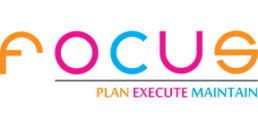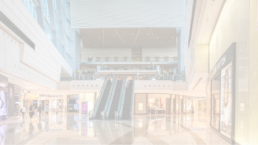Maximizing Sales with Holiday Shopfitting: A Comprehensive Guide
Holiday seasons are not only a time of celebration but also a time of increased consumer spending. As a retailer, it's crucial to capitalize on this opportunity by creating a visually appealing and customer-friendly shopping environment. This is where holiday shopfitting comes into play.
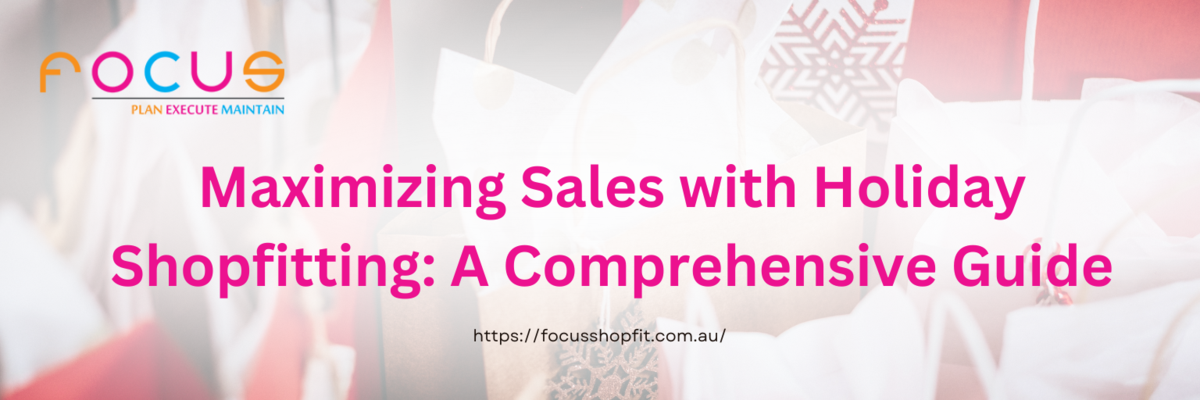
Shopfitting refers to the process of designing and fitting out retail stores to optimize their layout and aesthetics. With the right holiday shopfitting strategy, you can attract more customers, increase sales, and enhance the overall shopping experience. In this comprehensive guide, we will explore the benefits of holiday shopfitting, offer tips for maximizing sales, and provide insights into choosing the right shopfitting company for your holiday store.
Benefits of holiday shopfitting
Investing in holiday shopfitting can yield several benefits for retailers. Firstly, an attractive and festive store design can grab customers' attention and create a positive first impression. This can lead to increased foot traffic and higher chances of making sales. Additionally, a well-planned shopfitting strategy can enhance the customer experience by improving navigation, making products more accessible, and creating an inviting atmosphere.

Holiday shopfitting also allows you to showcase your products in the best possible way. By utilizing creative displays, signage, and lighting, you can highlight your holiday offerings and promotions, enticing customers to make purchases. Moreover, a thoughtfully designed store layout can encourage impulse buying, ultimately boosting your sales revenue during the holiday season.
Shopfitting for the holidays: planning and strategy
Before diving into the holiday shopfitting process, it's essential to develop a comprehensive strategy. Start by analyzing your target market, understanding their preferences, and identifying the key trends for the upcoming holiday season. This research will guide your decisions regarding store layout, color schemes, and product placement.
Next, consider the specific goals you want to achieve through your holiday shopfitting efforts. Do you want to increase sales of particular product lines? Or perhaps you aim to create a memorable shopping experience for your customers? Defining these objectives will help you make informed choices when it comes to design elements and visual merchandising.
Once you have a clear understanding of your target market and goals, it's time to develop a detailed plan. This plan should cover aspects such as store layout, fixtures and fittings, lighting, signage, and decorations. Don't forget to consider the practical aspects, such as traffic flow and accessibility, to ensure a seamless shopping experience for your customers.
Key elements of a successful shopfitting design for the holidays
A successful holiday shopfitting design incorporates various elements that work together to create an enticing and functional retail space. Here are some key elements to consider when shopfitting for the holidays:
- Festive decorations and themes
One of the most effective ways to create a holiday ambiance in your store is through festive decorations and themes. Consider incorporating seasonal colors, such as red and green for Christmas or pastels for Easter, into your store design. Hang garlands, wreaths, and fairy lights to add a touch of magic. Remember to align your decorations with your brand image and target audience for a cohesive look.
- Engaging window displays
Your store's window displays are the first point of contact with potential customers. Create eye-catching and engaging displays that showcase your holiday products and promotions. Use props, mannequins, and interactive elements to capture attention and entice passersby to step inside. Keep the displays fresh and updated throughout the holiday season to maintain customer interest.
- Strategic product placement
Strategically placing your holiday merchandise can significantly impact sales. Position high-demand or impulse-buy items near the entrance or checkout counter to encourage last-minute purchases. Use tiered displays or shelving to showcase a variety of products at different price points, catering to different customer preferences. Pay attention to product grouping and create visually appealing arrangements to maximize their appeal.

Tips for maximizing sales through holiday shopfitting
Now that you understand the key elements of holiday shopfitting design, let's explore some practical tips to maximize your sales during the holiday season:
- Create a sense of urgency
Limited-time offers flash sales, and exclusive holiday promotions can create a sense of urgency among shoppers. Utilize signage, display cards, and digital screens to highlight these time-sensitive deals. By creating a sense of urgency, you can motivate customers to make immediate purchases, increasing your sales volume.
- Leverage technology
Incorporating technology into your holiday shopfitting strategy can enhance the customer experience and drive sales. Consider implementing interactive screens where customers can explore product details, watch demos, or access special offers. Offer mobile payment options to expedite the checkout process and cater to tech-savvy customers. Embracing technology can set your store apart from the competition and attract a wider customer base.
- Train your staff
The well-trained and knowledgeable staff can make a significant difference in converting browsing customers into buyers. Provide your sales associates with comprehensive training on your holiday product offerings, promotions, and customer service techniques. Encourage them to engage with customers, offer personalized recommendations, and upsell when appropriate. Excellent customer service can leave a lasting impression and build customer loyalty, leading to repeat business.
Choosing the right shopfitting company for your holiday store
When it comes to holiday shopfitting, partnering with the right shopfitting company can make all the difference. Here are a few factors to consider when choosing a shopfitting company for your holiday store:
- Experience and expertise: Look for a company with a proven track record in holiday shopfitting. Check their portfolio and client testimonials to gauge their experience and expertise in creating successful holiday store designs.
- Customization options: Each store has its unique requirements and branding. Ensure that the shopfitting company can offer customized solutions tailored to your specific needs. They should be able to understand your vision and bring it to life.
- Project management capabilities: A professional shopfitting company should have strong project management skills. They should be able to handle all aspects of the project, from design to installation, within the agreed timeline and budget.
- Quality and durability: Pay attention to the quality of materials used by the shopfitting company. The fixtures, fittings, and decorations should be of high quality and durable enough to withstand the holiday rush.
Common mistakes to avoid in holiday shopfitting
While holiday shopfitting can be highly beneficial, it's essential to avoid common mistakes that can undermine your efforts. Here are a few pitfalls to watch out for:
- Going overboard with decorations: While festive decorations are crucial, it's important not to overwhelm your store with excessive ornaments. Maintain a balance between holiday cheer and clutter to ensure a visually appealing shopping environment.
- Neglecting traffic flow: A congested and poorly organized store layout can frustrate customers and discourage them from making purchases. Pay attention to traffic flow, ensuring that aisles are wide enough, and products are easily accessible.
- Inconsistent branding: Your holiday shopfitting design should align with your overall brand image and identity. Avoid creating a disconnect by maintaining consistency in color schemes, signage, and decorations.
- Poor lighting choices: Lighting plays a vital role in setting the mood and highlighting products. Avoid dim or harsh lighting that can negatively impact the shopping experience. Invest in quality lighting fixtures that enhance visibility and create an inviting ambiance.

The impact of holiday shopfitting on sales and customer experience
Holiday shopfitting is a powerful tool that can significantly impact your sales during the festive season. By strategically planning your shopfitting strategy, incorporating key design elements, and implementing effective sales techniques, you can create a visually appealing and customer-friendly store that maximizes your revenue. With careful planning, attention to detail, and a focus on customer satisfaction, your holiday shopfitting endeavors can contribute to a successful and profitable holiday season for your retail business.
How to Find Experts in Retail Fitout in Darwin
When it comes to setting up a retail store in Darwin, there are several important factors to consider. One of the most crucial aspects is the retail fitout, which refers to the design and layout of the store. A well-executed retail fitout can enhance the shopping experience for customers and ultimately lead to increased sales. However, achieving a successful retail fitout requires the expertise and knowledge of professionals who specialize in this field. In this article, we will discuss the importance of hiring experts for retail fitout in Darwin and provide you with useful tips on how to find the right professionals for your project.
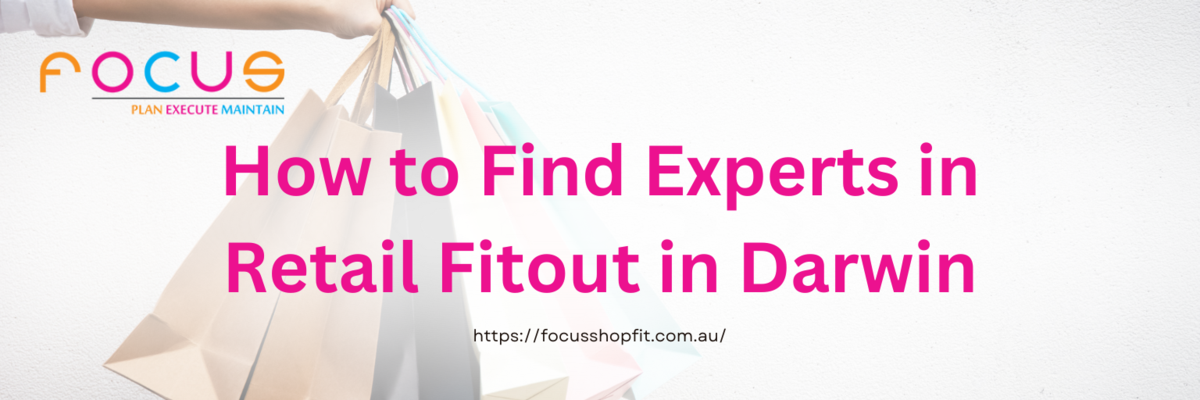
Why Hiring Experts is Important
Retail fitout is a complex process that involves various elements such as space planning, interior design, lighting, fixtures, and signage. It requires a deep understanding of customer behavior, industry trends, and functional requirements. Hiring experts in retail fitout will ensure that your store is designed and built to meet the specific needs of your business and target audience. These professionals have the knowledge and experience to create a functional and attractive space that maximizes the potential of your retail store.
Moreover, experts in retail fitout in Darwin are familiar with local regulations and building codes. They can navigate the necessary permits and approvals required for your project, saving you time and potential legal issues. Additionally, professionals in this field have established relationships with suppliers and contractors, which can result in cost savings and efficient project management.
Researching Retail Fitout Experts in Darwin
When embarking on the search for retail fitout experts in Darwin, it is essential to conduct thorough research to find professionals who meet your specific requirements. Here are some steps you can take to find the right experts for your retail fitout project:
Checking for Qualifications and Experience
Start by checking for qualifications and experience. Look for professionals who have relevant certifications, such as interior design or architecture degrees. Additionally, consider their experience in the field and whether they have worked on similar projects before. Experienced professionals are more likely to have a deep understanding of retail fitout and can provide valuable insights and solutions.
Reading Customer Reviews and Testimonials
Next, read customer reviews and testimonials. This will give you an idea of the quality of work and customer satisfaction that the experts have achieved in their previous projects.
Asking for Recommendations from Other Business Owners
Another effective strategy is to ask for recommendations from other business owners in Darwin who have recently undergone retail fitout projects. They can provide firsthand insights into their experience with specific experts and share any challenges they faced during the process. Recommendations from trusted sources can help you narrow down your options and find professionals with a proven track record.
Conducting Interviews with Potential Experts
After shortlisting a few potential experts, it is crucial to conduct interviews to assess their suitability for your retail fitout project. Prepare a list of questions that cover aspects such as their design process, project management approach, and understanding of your business goals. During the interview, pay attention to their communication skills, level of professionalism, and overall compatibility with your team. Remember, you will be working closely with the chosen experts throughout the project, so it is essential to establish a positive working relationship.
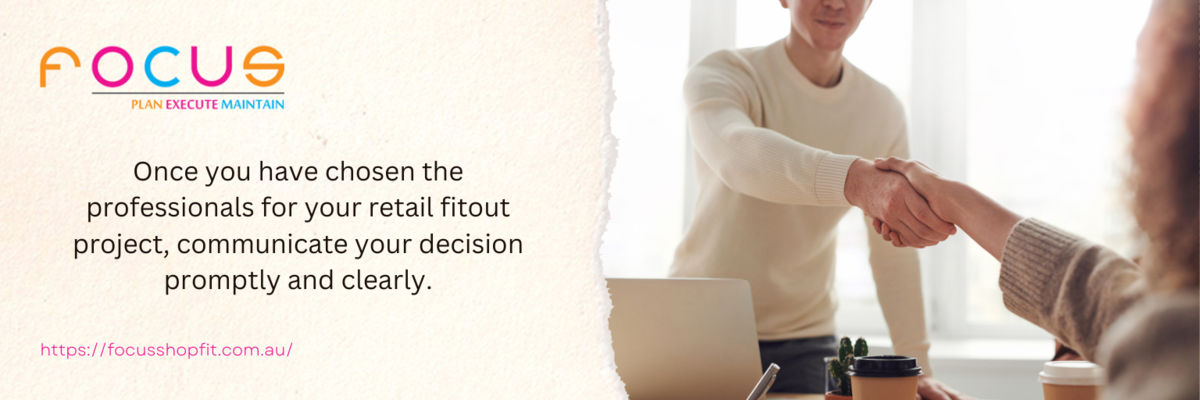
Evaluating Quotes and Proposals
Once you have gathered all the necessary information and conducted interviews, it is time to evaluate quotes and proposals from the shortlisted experts. Take into consideration the scope of work, timelines, and cost estimates provided by each professional. It is essential to compare these factors alongside the quality of work, experience, and reputation of each expert. Remember that the most inexpensive option may not always be the best choice. Look for a balance between affordability and expertise to ensure the best outcome for your retail fitout project.
Making the Final Decision and Hiring the Experts
After careful consideration, make the final decision and hire the experts who best meet your requirements. Once you have chosen the professionals for your retail fitout project, communicate your decision promptly and clearly. Discuss the project timeline, deliverables, and any specific requirements or concerns you may have. Establish a clear line of communication and ensure that both parties are aligned on project goals and expectations.

Essential for Store’s Success
Finding experts in retail fitout in Darwin is essential for the success of your retail store. These professionals possess the knowledge and experience necessary to create a functional and appealing space that maximizes your business's potential. By conducting thorough research, checking qualifications and experience, reading customer reviews, asking for recommendations, conducting interviews, and evaluating quotes, you can find the right experts for your retail fitout project. Remember to make the final decision based on a balance between expertise and affordability. With the help of experts in retail fitout, you can create a captivating retail environment that attracts customers and drives sales.
From Planning to Execution: How Much Does a Shopfit Cost?
Shopfitting is a crucial process in the retail industry that involves designing, furnishing, and equipping a retail space to create an attractive and functional environment for customers. As a business owner or manager, understanding the costs involved in shopfitting is essential for effective budgeting and decision-making. In this article, we will explore the factors that influence shopfitting costs, average costs for different types of businesses, how to determine your shopfitting budget, hidden costs to consider, ways to save money without compromising quality, the importance of hiring a shopfitting professional, and real-life case studies to provide you with a comprehensive understanding of shopfitting costs.

Understanding Shopfitting
Before delving into the costs, it is important to have a clear understanding of what shopfitting entails. Shopfitting is not just about creating an aesthetically pleasing store; it is about optimizing the space to enhance the customer experience and increase sales. It involves various elements such as layout design, fixtures, lighting, flooring, signage, displays, and technology integration. Each element contributes to creating a cohesive and engaging retail environment that reflects your brand identity and attracts your target audience.
Factors That Influence Shopfitting Costs
Several factors can influence the cost of a shopfitting project. The size of the retail space is one of the primary factors, as larger spaces require more materials and labor. The complexity of the design and the level of customization also impact costs. For example, if you require intricate custom-made fixtures and displays, it will be more expensive compared to off-the-shelf options. The quality of materials used, such as the type of flooring or lighting fixtures, can significantly affect the overall cost. Additionally, location plays a role, as labor and material costs can vary depending on the region and accessibility of the site.
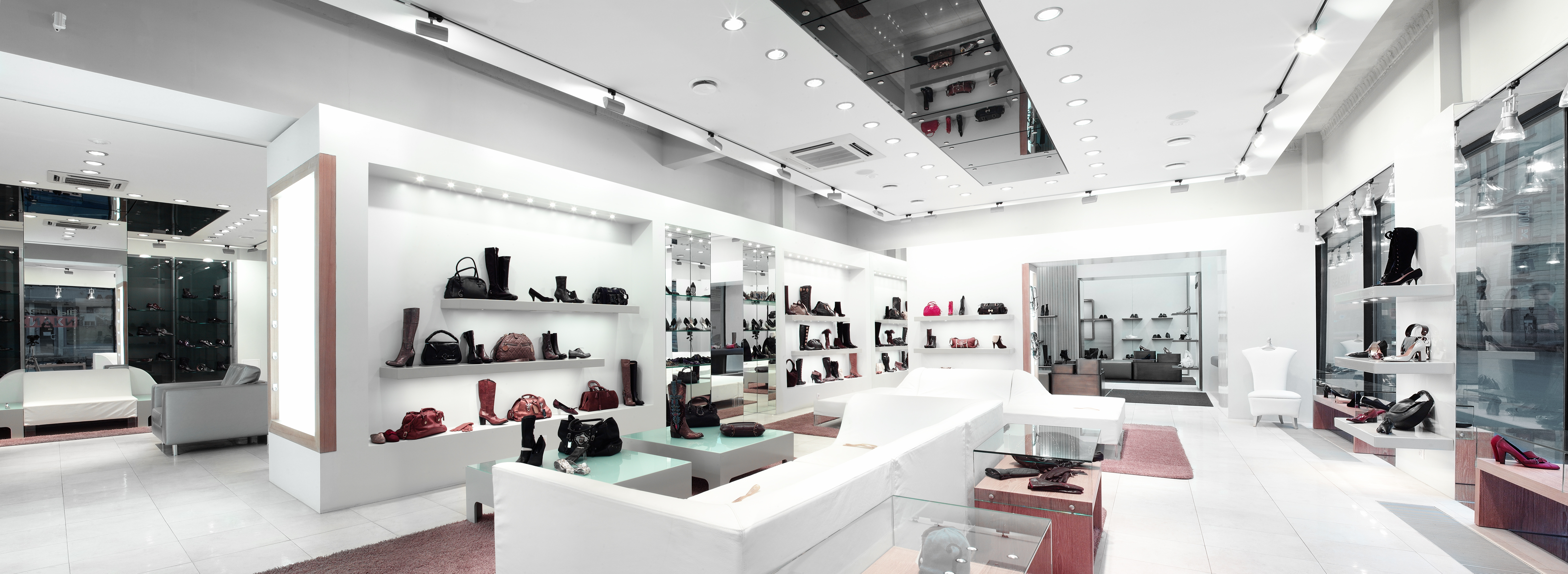
The type of business you operate is another crucial factor. Different industries have distinct requirements, and therefore, the cost of shopfitting can vary. For instance, a high-end fashion boutique may require premium materials and sophisticated lighting, while a fast-food restaurant may prioritize efficient kitchen equipment and durable seating. Understanding your specific industry needs will help you estimate the costs more accurately.
Average Shopfitting Costs
It is important to note that shopfitting costs can vary significantly depending on the size, complexity, and location of the project. However, we can provide you with some average cost ranges based on different types of businesses to give you a general idea.
Determining Your Shopfitting Budget
Once you have a general understanding of average costs, it is important to determine your shopfitting budget. Start by assessing your overall financial situation and the funds you have available for the project. Consider your business goals and the value you place on creating an exceptional customer experience. Remember that shopfitting is an investment in the long-term success of your business, so it is crucial to allocate a realistic budget.
Consulting with a shopfitting professional can help you determine the feasibility of your budget and provide guidance on cost-saving strategies. Consider allocating a contingency fund for unexpected expenses that may arise during the project. It is better to be prepared for unforeseen costs rather than being caught off guard.
Shopfitting Cost Breakdown
To better understand the cost breakdown of a shopfitting project, let's take a closer look at the various elements involved:
- Design and Planning: This includes the fees for hiring an architect or interior designer to create a functional and visually appealing layout for your retail space. It may also involve obtaining necessary permits and approvals from local authorities.
- Fixtures and Displays: The cost of fixtures and displays, such as shelving units, racks, mannequins, and product displays, can vary depending on the materials and customization required.
- Flooring: Flooring options range from basic vinyl or carpeting to high-end hardwood or polished concrete. The cost will depend on the square footage of the area, the type of flooring material, and any additional labor required for installation.
- Lighting: Lighting plays a crucial role in creating the right ambiance and highlighting products. The cost includes the purchase and installation of lighting fixtures, as well as any electrical work required.
- Signage: From exterior signage to interior wayfinding signs, the cost of signage depends on the size, materials, and complexity of the design.
- Technology Integration: If you require technology integration such as point-of-sale systems, security cameras, or audiovisual equipment, these costs should be factored into your budget.
- Labor and Installation: The cost of labor for shopfitting projects can vary depending on the complexity of the design, the number of trades involved (carpenters, electricians, plumbers, etc.), and the location.
By understanding the cost breakdown, you can prioritize your expenses and make informed decisions during the shopfitting process.

Hidden Costs to Consider During Shopfitting
While estimating the costs of shopfitting, it is important to consider potential hidden costs that may arise during the project. These can include:
- Site Preparation: If your retail space requires extensive preparation, such as demolition, asbestos removal, or structural modifications, these costs can add up.
- Unforeseen Structural Issues: Once the project is underway, unexpected structural issues may be uncovered, requiring additional work and expenses.
- Permits and Approvals: Depending on your location and the scope of your project, you may need to obtain permits and approvals from local authorities. These can incur fees and potential delays.
- Utilities and Services: Installing or modifying utilities such as plumbing, electrical, and HVAC systems may require the involvement of specialized trades and incur additional costs.
- Project Management: If you choose to take a hands-on approach to project management, consider the time and effort required, as well as the potential for unforeseen challenges. Hiring a project manager can help streamline the process but comes with additional costs.
Being aware of these hidden costs will help you avoid any financial surprises and ensure a smoother shopfitting experience.
Ways to Save Money on Shopfitting Without Compromising Quality
While shopfitting can be a significant investment, there are ways to save money without compromising the quality of your project. Consider the following strategies:
- Prioritize Essential Elements: Focus on the key elements that will have the most impact on your customer experience, such as lighting, flooring, and fixtures. Allocate your budget accordingly to ensure these areas are of high quality.
- Consider Pre-owned or Repurposed Fixtures: Instead of investing in brand-new fixtures and displays, explore options for pre-owned or repurposed items. This can significantly reduce costs while still maintaining a unique and stylish look.
- Utilize Off-the-shelf Products: Off-the-shelf products are often more cost-effective than custom-made items. Explore ready-made fixtures and displays that align with your design vision to save both time and money.
- Get Multiple Quotes: It is always wise to obtain multiple quotes from different shopfitting professionals. This allows you to compare prices, services, and expertise to find the best fit for your project.
- Timing: Consider the timing of your shopfitting project. Off-peak seasons or slower business periods may provide opportunities for cost savings, as contractors may offer discounts or reduced rates.
By implementing these cost-saving strategies, you can achieve a high-quality shopfitting project within your budget.
Hiring a Shopfitting Professional
While it may be tempting to tackle shopfitting as a do-it-yourself project, hiring a professional is highly recommended. A shopfitting professional brings expertise, experience, and industry knowledge to the table, ensuring that your project is executed efficiently and to the highest standards.
When choosing a shopfitting professional, consider the following:
- Portfolio and Experience: Review their portfolio to assess their previous work and expertise in your specific industry. Look for examples that align with your design vision and requirements.
- Reputation and Reviews: Research the shopfitting professional's reputation by reading reviews and testimonials from previous clients. This will give you insight into their reliability, professionalism, and overall quality of work.
- Clear Communication: Effective communication is vital throughout the shopfitting process. Ensure that the professional you choose is responsive, transparent, and able to clearly articulate their ideas and recommendations.
- Budget Management: A reputable shopfitting professional will have experience in managing budgets effectively. Discuss your budget expectations upfront to ensure that they can work within your financial limitations.
By hiring a shopfitting professional, you can save time, avoid costly mistakes, and achieve a successful shopfitting project that aligns with your business goals.

Finding the Right Balance Between Cost and Quality in Shopfitting
Shopfitting is a vital investment for businesses in the retail industry. Understanding the factors that influence shopfitting costs, determining your budget, and considering hidden expenses are crucial for effective planning and decision-making. By prioritizing essential elements, exploring cost-saving strategies, and hiring a shopfitting professional, you can achieve a high-quality shopfitting project that aligns with your budget and enhances your customer experience.
Remember, shopfitting is not just about the initial cost; it is an investment that can lead to increased sales, improved brand perception, and long-term success. By finding the right balance between cost and quality, you can create a retail space that resonates with your target audience and sets your business apart in a competitive market.
What is included in a shopfit?
When you step into a beautifully designed and well-organized retail store in Australia or anywhere in the world, have you ever wondered about the effort and expertise that went into creating such an appealing space? This is where shopfitting comes into play. Shopfitting is the art and science of creating customized interiors for retail spaces, ensuring that they are not only aesthetically pleasing but also functional and practical. In this article, we will delve into the various aspects included in a shopfit, exploring its purpose, elements, process, benefits, different types, materials, trends, and how to choose a professional shopfitting company.

The purpose of a shopfit
The primary purpose of a shopfit is to create an environment that attracts customers, enhances their shopping experience, and maximizes the potential for sales. A well-executed shopfit takes into consideration the target audience, the nature of the products or services being offered, and the overall brand image. It aims to create a space that reflects the values and identity of the business, while also providing functionality and convenience for both customers and staff.
The elements of a shopfit
A shopfit typically consists of various elements that work together to create a cohesive and visually appealing space. These elements include:
- Layout and design: The layout and design of a shopfit determine the flow of the space, the placement of fixtures, and the overall atmosphere. It involves careful planning of factors such as product placement, customer circulation, and focal points.
- Fixtures and fittings: This includes shelves, display units, cabinets, counters, and other furniture pieces that are specifically designed for retail environments. These fixtures are not only functional but also serve as a way to showcase products and create visual interest.
- Lighting: Lighting plays a crucial role in shopfitting, as it can dramatically impact the mood and ambiance of a store. From general lighting to highlight specific areas or products, to accent lighting that creates a focal point, the right lighting can enhance the overall shopping experience.
What is included in a shopfit: from design to installation
The process of shopfitting involves several stages, starting from the initial design concept to the final installation. Here is a brief overview of the typical shopfitting process:
- Consultation and brief: The shopfitting company meets with the client to understand their requirements, brand identity, target audience, and budget. This stage involves discussions, brainstorming sessions, and gathering essential information to create a design brief.
- Design and planning: Based on the brief, the shopfitting company develops a design concept, including layout, fixtures, finishes, and lighting. This stage may involve 3D renderings, floor plans, and material samples to help the client visualize the outcome.
- Manufacturing and procurement: Once the design is finalized, the shopfitting company procures the necessary materials, fixtures, and fittings. Custom elements are manufactured, and any necessary modifications or adjustments are made during this stage.
- Installation and fit-out: The actual installation of the shopfit takes place during this stage. This includes the construction, assembly, and placement of fixtures, fittings, and other elements. The shopfitting company ensures that the installation is done efficiently, adhering to timelines and quality standards.
- Handover and post-installation support: After the installation is complete, the shopfitting company conducts a final inspection to ensure everything is in order. They provide the client with any necessary documentation, instructions, and warranties. Additionally, they may offer post-installation support, such as maintenance, repairs, or modifications, as needed.
Benefits of a well-executed shopfit
Investing in a well-executed shopfit can yield numerous benefits for a retail business. Some of the key advantages include:
- Increased sales: A thoughtfully designed and attractive retail space can significantly impact customer perception and encourage them to spend more time and money in the store. An appealing shopfit can create a positive impression, enhance product visibility, and increase sales.
- Improved customer experience: A well-designed shopfit can create a comfortable and enjoyable shopping experience for customers. It can make navigation easier, enable efficient product browsing, and provide clear signage and information, all of which contribute to customer satisfaction and loyalty.
- Enhanced brand image: The shopfit is an extension of a brand's identity and values. A well-executed shopfit can reinforce the brand image, create a consistent customer experience across multiple locations, and differentiate the business from competitors.
- Efficient use of space: Shopfitting involves optimizing the use of available space to maximize product display and storage. By utilizing clever fixtures, layout design, and storage solutions, a shopfit can help improve operational efficiency and utilize every inch of the store effectively.
What is included in a shopfit: different types of fitouts
Shopfits can vary depending on the nature of the business, the target audience, and the products or services being offered. Here are a few common types of shopfits:
- Fashion retail: Fashion retailers often focus on creating visually appealing spaces that showcase their products effectively. This may involve incorporating features such as fitting rooms, clothing racks, and well-lit display areas.
- Food and beverage: Shopfits in the food and beverage industry are designed to create a welcoming and comfortable atmosphere for customers. This may include seating areas, counters, specialized equipment, and appropriate lighting.
- Electronics and technology: Shopfits in this industry prioritize functionality, accessibility, and product demonstration. Display areas, interactive screens, and secure storage are common elements in electronics and technology retail spaces.
- Department stores: Department store shopfits are typically large-scale projects that require careful planning and zoning. These shopfits may include multiple departments, each with its own unique design and layout requirements.
Included in a Shopfit: Shopfitting materials and finishes
Shopfitting materials and finishes play a vital role in the overall aesthetic appeal and durability of a retail space. Here are some commonly used materials and finishes:
- Wood: Wood is a popular choice due to its versatility, warmth, and natural beauty. It can be used for fixtures, flooring, counters, and display units.
- Glass: Glass is often used to create a sense of openness, transparency, and elegance. It is commonly used for display cases, partitions, and storefronts.
- Metal: Metal is known for being strong, stable, and durable. It is frequently used for fixtures, shelving systems, and decorative elements.
- Laminate: Laminate offers a wide range of colors, patterns, and textures at an affordable cost. It is commonly used for countertops, cabinets, and wall panels.

Shopfitting trends and innovations
Shopfitting is an ever-evolving industry, with new trends and innovations constantly emerging. Here are a few current trends that are shaping the world of shopfitting:
- Sustainable shopfits: With increasing emphasis on sustainability, many retailers are opting for eco-friendly materials, energy-efficient lighting, and sustainable design practices.
- Technology integration: The integration of technology in shopfits is becoming increasingly common. This includes interactive displays, digital signage, augmented reality, and mobile payment systems.
- Flexible and modular designs: Retail spaces that can be easily reconfigured to adapt to changing needs and trends are gaining popularity. Modular fixtures and flexible layouts allow for customization and versatility.
- Multichannel integration: Retailers are focusing on creating seamless shopping experiences across multiple channels, such as online and offline. This involves integrating technology, inventory management systems, and customer data.

The importance of a professional shopfit
A professional shopfit can transform a retail space into a visually appealing, functional, and profitable environment. It involves meticulous planning, design, and execution to create a space that reflects the brand identity, attracts customers, and enhances the overall shopping experience. By investing in a well-executed shopfit and choosing the right shopfitting company, businesses can reap the benefits of increased sales, improved customer satisfaction, and a strong brand image. So, the next time you step into a beautifully designed store, take a moment to appreciate the art of shopfitting behind it.
Retail Fitout Darwin: Elevate Your Store's Appeal and Boost Your Business
In the competitive world of retail, businesses must stand out from the crowd. One effective way to achieve this is through a retail fitout. But what exactly is a retail fitout, and why is it important? Continue reading Retail Fitout Darwin: Elevate Your Store's Appeal and Boost Your Business below to learn more.

A retail fitout refers to the process of designing and renovating a retail space to maximize its appeal and functionality. It involves creating a visually appealing and well-organized environment that enhances the customer experience and showcases your products or services in the best possible way.
Investing in a retail fitout is important for several reasons. Firstly, it helps create a positive first impression on customers. When people enter a store that is well-designed and visually appealing, they are more likely to stay longer, explore the products, and make a purchase. A retail fitout also contributes to the overall branding and image of your business. By aligning the store's aesthetics with your brand identity, you can create a consistent and memorable experience for customers.
Furthermore, a well-designed retail space can optimize the flow of customer traffic and improve operational efficiency. By strategically placing displays, shelves, and checkout counters, you can guide customers through the store and encourage them to explore different sections. This can lead to an increase in sales and overall customer satisfaction.
Retail Fitout Darwin: Benefits of retail fitouts for businesses
Investing in a retail fitout offers numerous benefits for businesses, regardless of their size or industry. Let's explore some of the key advantages:
- Enhanced customer experience: A well-designed retail space can create a positive and memorable experience for customers. By incorporating elements such as comfortable seating areas, attractive displays, and engaging product presentations, you can make your store more inviting and enjoyable to visit.
- Increased sales and profitability: A thoughtfully planned retail fitout can significantly impact your sales and profitability. By optimizing the store layout, highlighting key products, and creating eye-catching displays, you can attract more customers and encourage them to make purchases. Additionally, a well-designed store can foster customer loyalty, leading to repeat business and higher customer lifetime value.
- Improved brand image: Your store's interior design plays a crucial role in shaping your brand image. A visually appealing and well-organized space reflects professionalism and attention to detail, which can enhance your brand's reputation and attract a wider customer base. A retail fitout allows you to align your store's aesthetics with your brand identity, creating a cohesive and impactful brand experience.
- Effective space utilization: Retail fitouts involve careful planning and utilization of available space. By optimizing the layout and storage solutions, you can make the most of your store's square footage. This can lead to improved operational efficiency, reduced clutter, and easier navigation for customers.

Factors to consider when planning a retail fitout
Planning a retail fitout requires careful consideration of various factors to ensure its success. Here are some key factors to keep in mind:
- Target audience: Understanding your target audience is essential when planning a retail fitout. Consider their preferences, needs, and buying behavior. This will help you determine the right design elements, colors, and layout that resonate with your customers.
- Store layout: The layout of your store should be intuitive and guide customers through different sections. Consider factors such as traffic flow, product placement, and checkout counter positioning. A well-planned layout can increase customer engagement and facilitate a seamless shopping experience.
- Brand identity: Your store's design should reflect your brand identity and values. Ensure that the colors, materials, and overall aesthetics align with your brand image. Consistency between your store and brand will help reinforce your message and create a cohesive customer experience.
- Functionality: While aesthetics are important, don't overlook the functionality of your retail space. Ensure that there is enough storage, adequate lighting, and comfortable customer areas. A functional store will not only enhance the customer experience but also facilitate smooth operations for your staff.
- Budget: Set a realistic budget for your retail fitout and prioritize your spending. Consider the cost of materials, manpower, and any necessary permits for your fitout. It's important to strike a balance between your vision and financial constraints to ensure a successful fitout.
By carefully considering these factors and working with experienced professionals, you can plan a retail fitout that meets your business goals and exceeds customer expectations.
Retail Fitout Darwin: Trends and design ideas
Staying up-to-date with the latest retail fitout trends and design ideas can help you create a modern and appealing store. Here are some popular trends to consider:
- Sustainable design: Incorporating sustainable materials and eco-friendly practices in your retail fitout can appeal to environmentally conscious customers. Consider using recycled materials, energy-efficient lighting, and implementing recycling or composting systems.
- Open and flexible layouts: Open floor plans with flexible fixtures and displays are gaining popularity. This design allows for easy reconfiguration of the store layout to accommodate changing product displays or events. It also creates a spacious and inviting atmosphere.
- Technology integration: Integrating technology into your retail fitout can enhance the customer experience. Consider incorporating interactive displays, self-checkout systems, or augmented reality features to engage and entertain customers while they shop.
- Artistic accents: Adding artistic elements to your store can create a unique and memorable experience. Consider incorporating murals, sculptures, or other forms of art that align with your brand and enhance the overall ambiance of the space.
- Personalization: Personalization is becoming increasingly important in retail. Consider incorporating personalized elements such as custom signage, digital displays that showcase personalized recommendations, or interactive product configurators.
By incorporating these trends and design ideas into your retail fitout, you can create a store that stands out from the competition and captivates your target audience.
Retail Fitout Darwin: Choosing the right retail fitout company
When it comes to executing your retail fitout project, choosing the right company is crucial for its success. Here are some factors to consider when selecting a retail fitout company in Darwin:
- Experience and expertise: Look for a company with extensive experience in retail fitouts. They should have a track record of successful projects and a deep understanding of the unique requirements and challenges of retail spaces.
- Portfolio: Review the company's portfolio to assess the quality and style of their previous work. This will give you an idea of whether their design aligns well with your vision.
- Reputation: Figure the company's reputation out by reading reviews and testimonials from their past clients. A reputable company should have positive feedback and a strong reputation for delivering high-quality projects on time and within budget.
- Collaboration and communication: Effective collaboration and communication are essential when working with a retail fitout company. Ensure that they are responsive, attentive to your needs, and willing to work closely with you throughout the project.
- Budget and timeline: Discuss your budget and timeline expectations upfront with the company. They should be able to provide a detailed breakdown of costs and a realistic timeline for completion.
By thoroughly evaluating these factors and conducting due diligence, you can select a retail fitout company in Darwin that is the right fit for your project.
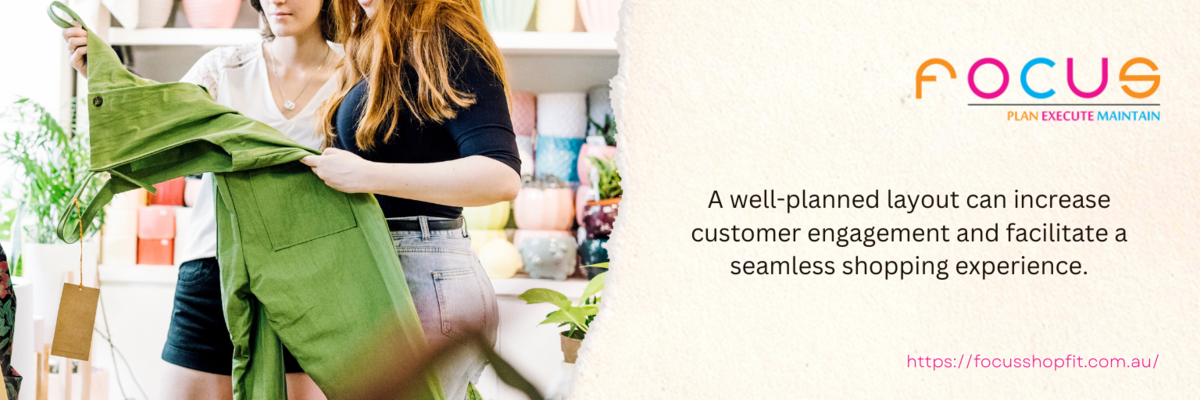
Retail Fitout Darwin: From concept to completion
Executing a retail fitout project involves several stages, from the initial concept to the completion. Here is an overview of the typical process:
- Consultation and brief: The first step is to meet with the retail fitout company and discuss your vision, requirements, and budget. This initial consultation helps establish a clear brief for the project.
- Design and planning: The company's design team will create a concept that aligns with your brief. They will develop detailed plans, 3D renderings, and material samples to help you visualize the final result. This phase may involve a number of iterations and feedback sessions.
- Permissions and approvals: Depending on the scope of the project, you may need to obtain permits and approvals from relevant authorities. The retail fitout company can guide you through this process and ensure compliance with local regulations.
- Construction and installation: Once the plans are finalized and approvals are obtained, the construction phase begins. The retail fitout company will coordinate with contractors, suppliers, and artisans to bring the design to life. This includes tasks such as demolition, carpentry, electrical work, painting, and installation of fixtures and fittings.
- Quality control and finishing touches: Throughout the construction phase, quality control measures are implemented to ensure that the project meets the highest standards. Once the construction is complete, the finishing touches such as signage, lighting, and branding elements are added.
- Handover and post-construction support: After the fitout is completed, the company will conduct a final inspection and hand over the space to you. They should provide post-construction support and address any issues or concerns that may arise.
By understanding the retail fitout process and working closely with the chosen company, you can ensure a smooth and successful project from concept to completion.
Retail fitout costs and budgeting
Like any construction or renovation project, retail fitouts involve costs that need to be carefully budgeted for. The total cost of a retail fitout can vary depending on factors such as the size of the space, the complexity of the design, and the materials used. Here are some cost considerations:
- Design and planning: The design and planning phase typically incurs costs for the professional services of architects, designers, and engineers. These costs may be calculated as a percentage of the total project cost or based on an hourly rate.
- Construction and labor: The cost of construction and labor can vary depending on the scope of the project and the trades involved. This includes tasks such as demolition, carpentry, electrical work, plumbing, painting, and installation of fixtures. It's important to obtain detailed quotes from contractors and ensure that all costs are accounted for.
- Materials and finishes: The choice of materials and finishes can significantly impact the cost of a retail fitout. High-quality materials and branded fixtures may come at a higher price, but they can also contribute to the overall aesthetics and durability of the space.
- Permits and approvals: Some retail fitouts may require permits and approvals from local authorities. These costs should be factored into the budget and may vary depending on the location and complexity of the project.
- Contingency: It's always wise to allocate a contingency budget for unexpected expenses or changes during the fitout process. This helps mitigate any unforeseen costs and ensures that the project stays within the overall budget.
To create an accurate budget, it's recommended to obtain detailed quotes from multiple suppliers and contractors. This will help you make informed decisions and ensure that the project aligns with your financial resources.
Retail Fitout Darwin: maintenance and updates
Once your retail fitout is complete, it's important to prioritize regular maintenance and updates to ensure that your store continues to look fresh and appealing. Here are some maintenance tips:
- Regular cleaning: Establish a cleaning schedule to keep your store looking tidy and presentable. Regularly dust displays, vacuum carpets, and clean windows to maintain a clean and inviting environment.
- Fixtures and fittings: Inspect fixtures and fittings regularly for any signs of wear or damage. Repair or replace them promptly to avoid safety hazards and maintain the overall aesthetics of the store.
- Lighting: Check the lighting fixtures and bulbs regularly to ensure they are functioning properly. Proper lighting is crucial for creating a visually appealing atmosphere and showcasing your products effectively.
- Product displays: Update your product displays regularly to keep them fresh and engaging. Consider seasonal promotions, new arrivals, or thematic displays to capture customer attention.
- Store layout: Periodically review your store layout to ensure it still meets the needs of your customers and your business. Adjustments may be necessary based on changing product lines, customer preferences, or operational requirements.
By regularly maintaining and updating your retail fitout, you can create a store that continues to attract customers and deliver a positive shopping experience.

Elevating your store's appeal with a retail fitout
A well-executed retail fitout can transform your store's appeal, boost customer engagement, and ultimately drive business growth. By understanding the importance of retail fitouts, considering key factors in the planning stage, and staying updated with the latest trends, you can create a store that stands out from the competition.
Choosing the right retail fitout company in Darwin is crucial for the success of your project. Thoroughly evaluate their experience, reputation, and ability to collaborate effectively. Work closely with them throughout the process to ensure your vision is brought to life.
Remember to budget carefully for your retail fitout, considering costs such as design, construction, materials, and permits. Obtain detailed quotes and allocate a contingency budget to avoid any financial surprises.
Maintaining and updating your retail fitout is equally important. Regular cleaning, fixture inspections, and product display updates will help keep your store looking fresh and inviting.
Investing in a retail fitout is an investment in your business's success. By creating a visually appealing, well-organized, and customer-centric store, you can elevate your brand, attract more customers, and boost your business's profitability. Start planning your retail fitout in Darwin today and take your store to new heights.
How to Successfully Accomplish a Retail Fitout
Retail fitouts play a crucial role in creating a visually appealing and functional space for businesses. Whether you're starting a new retail venture or renovating an existing one, a well-executed fitout can enhance the customer experience and boost your business's success. In this article, we will explore the concept of a retail fitout, discuss the importance of a well-executed fitout, and provide you with valuable tips and insights on how to accomplish a retail fitout successfully.

Understanding Shop Fit Out Concepts
A retail fitout refers to the process of designing and constructing the interior space of a retail store. It involves various elements, such as the layout, fixtures, signage, lighting, and decor, that are carefully planned and executed to create an inviting and functional environment for customers. A successful fitout should align with your brand image, target market, and overall business goals.
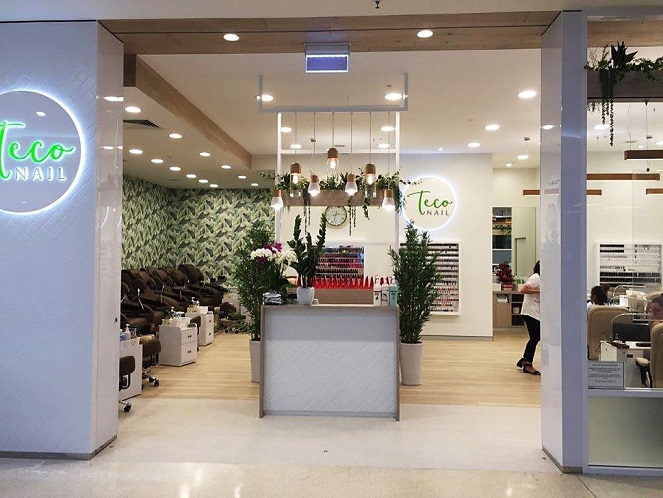
Importance of a Well-Executed Retail Fitout
A well-executed retail fitout can have a significant impact on your business's success. It helps create a positive first impression on customers, making them more likely to enter your store and make a purchase. A thoughtfully designed and curated space can also enhance the overall customer experience, making customers feel comfortable, engaged, and inspired. Furthermore, a well-designed fitout can improve the functionality of your store, optimizing the use of space and ensuring efficient operations.
Investing in a professional retail fitout can also give you a competitive edge. A visually appealing and aesthetically pleasing store can attract more foot traffic and differentiate your brand from competitors. It can also help build brand recognition and loyalty, as customers are more likely to remember and recommend a store with a unique and memorable interior.
Factors to Consider Before Starting a Shopfit
Before embarking on a retail fitout project, there are several factors to consider to ensure its success. First and foremost, you need to have a clear understanding of your brand identity and target market. The fitout should align with your brand's values, aesthetics, and target customers' preferences. Conducting market research and competitor analysis can provide valuable insights into current retail trends and customer expectations.
Another factor you should consider before starting is your budget. Establish a realistic budget for your fitout project, taking into account the costs of design, construction, materials, fixtures, and professional services. It's important to strike a balance between your desired fitout vision and the available resources. Prioritize the essential elements that will have the most significant impact on your business and allocate your budget accordingly.
Shopfit Planning
Proper planning is key to a successful retail fitout project. Start by creating a comprehensive project plan that outlines the desired outcomes, timelines, and milestones. Consider engaging the services of a professional fitout consultant or project manager to assist you in the planning process. They can provide expert advice, help you develop a realistic timeline, and ensure that all necessary permits and approvals are obtained.
During the planning phase, it's essential to create a detailed layout and floor plan for your store. Consider the flow of customer traffic, the positioning of product displays, and the allocation of space for different functional areas, such as checkout counters, fitting rooms, and storage. A well-designed layout will optimize the customer journey and maximize the use of available space.
Hiring Professionals for Your Retail Fitout
While it may be tempting to undertake a retail fitout project on your own, hiring professionals can save you time, money, and potential headaches. Consider engaging an experienced retail fitout company or interior designer who specializes in commercial spaces. They have the expertise and industry knowledge to bring your fitout vision to life, ensuring that it aligns with your brand and meets all regulatory requirements.
A professional fitout team in Australia, for example, will handle all aspects of the project, from design and construction to sourcing materials and managing contractors. They can also provide valuable advice on the latest retail trends, innovative design solutions, and cost-saving measures. Collaborating with professionals will not only streamline the fitout process but also ensure a high-quality result that exceeds your expectations.
Budgeting and Cost Considerations
Budgeting is a critical aspect of any retail fitout project. It's essential to establish a realistic budget and ensure that it covers all necessary expenses. Consider obtaining quotes from multiple contractors and suppliers to compare costs and services. Be transparent with your budget limitations and communicate your priorities to the fitout team to find creative solutions that meet your financial requirements.
In addition to construction and design costs, it's important to account for other expenses, such as permits, licenses, insurance, and ongoing maintenance. Keep in mind that unexpected costs may arise during the fitout process, so it's advisable to allocate a contingency budget to handle unforeseen circumstances.
Choosing the Right Design Elements for your Retail Fitout
The design elements you choose for your retail fitout can significantly impact the overall ambiance and functionality of your store. Consider the following factors when selecting design elements:
- Brand Identity: Ensure that the design elements align with your brand's personality, values, and target market. Choose colors, materials, and textures that reflect your brand's aesthetics and create a cohesive brand experience.
- Space Optimization: Maximize the use of available space by selecting fixtures and furniture that are both visually appealing and functional. Consider modular and flexible designs that can be easily rearranged to accommodate changing needs.
- Lighting: Lighting plays a crucial role in creating the right atmosphere in a retail store. Use a combination of ambient, task, and accent lighting to highlight products, create focal points, and enhance the overall ambiance.
- Visual Merchandising: Choose display fixtures and shelving systems that showcase your products effectively. Consider the layout and positioning of displays to encourage customer engagement and optimize product visibility.
- Branded Signage: Incorporate branded signage that catches the attention of passersby and communicates your store's offerings. Use signage strategically to guide customers through the store and highlight promotions or new arrivals.

Implementing the Retail Fitout: Step by Step Process
Once the planning and design stages are complete, it's time to implement your retail fitout project. The following steps provide a general guideline for the fitout implementation process:
- Site Preparation: Clear the space and ensure it is ready for construction. This may involve removing existing fixtures, repairing any damages, and preparing the necessary utilities.
- Construction and Installation: Engage contractors to carry out the necessary construction, electrical, plumbing, and carpentry work. Install fixtures, fittings, and equipment according to the approved design plans.
- Finishes and Decor: Apply the desired finishes, such as paint, wallpaper, flooring, and window treatments. Add decorative elements, such as artwork, signage, and plants, to enhance the overall ambiance.
- Testing and Inspections: Test all electrical, plumbing, and HVAC systems to ensure they are functioning properly. Arrange for the necessary inspections and obtain any required certificates or permits.
- Merchandising and Stocking: Once the fitout is complete, stock your store with products, arrange displays properly, and merchandise shelves. Ensure that products are organized and visually appealing to attract customers.
- Soft Launch and Feedback: Conduct a soft launch or trial period to gather feedback from customers and make any necessary adjustments. Use this opportunity to train staff and fine-tune operational processes.
Common Challenges During a Retail Fitout and How to Overcome Them
While a retail fitout can be an exciting endeavor, it's not without its challenges. Some common challenges include budget constraints, design conflicts, delays in construction, and unforeseen technical issues. Here are some strategies to overcome these challenges:
- Budget Constraints: Prioritize essential elements and allocate your budget accordingly. Consider cost-saving alternatives without compromising on quality.
- Design Conflicts: Maintain open communication with your fitout team to address any design conflicts promptly. Be clear about your expectations and provide feedback throughout the process.
- Construction Delays: Plan for potential delays by establishing realistic timelines and factoring in contingency time. Regularly communicate with contractors to ensure they are on track.
- Technical Issues: Engage experienced contractors and tradesmen who have a track record of delivering high-quality work. Conduct regular inspections to identify and resolve any technical issues early on.
Retail Fitout Trends to Consider
To stay ahead in the competitive retail industry, it's crucial to stay updated with the latest fitout trends. Here are some trends to consider:
- Sustainable Design: Incorporate eco-friendly materials, energy-efficient lighting, and recycling initiatives to demonstrate your commitment to sustainability.
- Technology Integration: Embrace technology by incorporating interactive displays, digital signage, and mobile payment options to enhance the customer experience.
- Flexible and Multi-Purpose Spaces: Design versatile spaces that can adapt to changing needs, such as pop-up shops, events, workshops, or community gatherings.
- Biophilic Design: Integrate elements of nature, such as green walls, natural materials, and indoor plants, to create a calming and inviting environment.
The Impact of a Successful Retail Fitout on Your Business
A successful retail fitout can have a profound impact on your business's success. It creates an inviting and memorable space that attracts customers, encourages longer dwell times, and increases the likelihood of repeat visits. A well-designed fitout can also improve operational efficiency, optimize product displays, and enhance the overall customer experience.
By investing in a professional retail fitout, you can differentiate your brand from competitors, build customer loyalty, and increase sales. A visually appealing and functional store creates a positive impression on customers, making them more likely to engage with your brand and recommend your store to others.

What a Retail Fitout Requires
Accomplishing a retail fitout requires careful planning, attention to detail, and collaboration with professionals. By understanding the concept of a retail fitout, considering important factors, and implementing a well-thought-out fitout plan, you can create a visually appealing and functional space that enhances your business's success. Remember to stay up-to-date with industry trends and embrace innovative design solutions to stay ahead in the competitive retail landscape. A successful retail fitout can make a lasting impression on customers, drive sales, and position your brand for long-term success.
